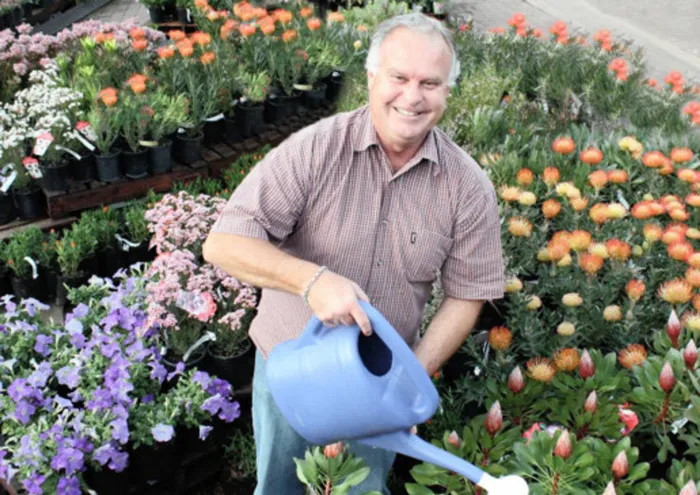Edible’s the hot ticket this spring

Gerald Schofield at Blackwood nursery. Picture: Cate Rayner Gerald Schofield at Blackwood nursery. Picture: Cate Rayner
Durban - Nurseryman Gerald Schofield says it time for some garden springcleaning.
“It’s time to rejuvenate old and tired parts of the garden. Cut down and prune back scraggly shrubs and perennials,” says Schofield, who also writes for The Gardener and Tuinier magazines.
“Spring means out with the old and in with the new.”
Make space for new and exciting plants by preparing the soil with compost and root-stimulating fertiliser dug into the upper 25cm of the soil level.
“Select plants that fit growing conditions and other criteria – sun or shade, short or tall, colour schemes, evergreen or deciduous, indigenous or not, “ Schofield explains.
“After planting, water every day or two until a flourish of new growth appears. The best time to water is during the cool of the early morning or late afternoon. A good deep soaking, less frequently, is always more beneficial than a light sprinkling.”
When it comes to what is hip and happening, edible goodies are right on trend.
“Mix edible plants, including vegetables, herbs and fruit trees, with flowering plants in beds, pots and hanging baskets.”
Schofield recommends these easy options for the home gardener – frilly lettuce, cherry or vine tomatoes, sweet basil, mustard, rocket, chillies, peppers, spring onions, parsley, Swiss chard or spinach.
“Every garden, no matter how large or small, needs a lemon tree. Spring is a great time to plant one. Lemons grow best in rich, well-drained soil and a sunny position.”
Also making a fashionable comeback are plants with large flowers in shades of orange and purple. Try garden hybrids of indigenous gazanias and osteospermums.
In vogue for hot, sunny positions are indigenous aloes and succulents. Easy to grow, they require minimal water.
“Spring is a great time to plant them out so they are well established for the forthcoming autumn and winter flowering time.”
When it comes to older or more mature gardens, these often have plenty of shaded growing positions to fill.
“Remember that as a rule, green foliage plants are better suited to growing in shade as most flowering plants need plenty of sunshine to induce flower bud formation,” says Schofield.
“Use lots of leafy plants like ferns, begonias, dracaenas. Indigenous clivias are ideally suited to shade, putting on a spectacular spring display.
“Shaded parts of the garden caused by large tree canopies need to be watered frequently to allow the shade-tolerant plants to grow well.” - The Mercury